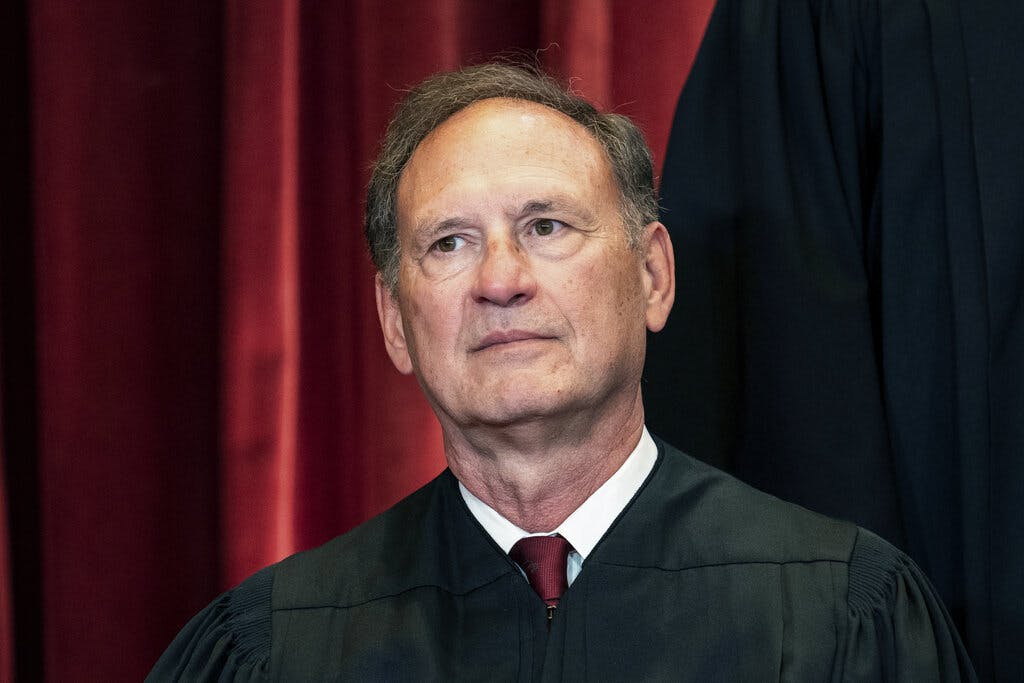The Battle Over the Abortion Pill
Justice Alito again rings the bell for judicial restraint on the high court.

In the great battle welling up over the abortion pill known as mifepristone, the Sun is on the side of Justices Clarence Thomas and Samuel Alito. They are the only two dissenters against the Supreme Court’s interim decision to preserve the abortion pill’s availability in the face of challenges — provisionally successful in lower courts— that argue that its approval by the Food and Drug Administration was tainted by irregular process.
Yet the case’s sudden appearance, on a rushed appeal, before the justices has put pro-life conservatives — and pro-life constitutionalists — in a pickle. It’s only a year since, in Dobbs v. Jackson Women’s Health, the court reversed Roe, sending abortion back to the people. At least for the moment, the pro-life faction has only two votes for halting distribution of the abortion pill pending a review of the FDA’s decision-making.
Then again, too, as the Wall Street Journal points out, the pro-abortion Democrats are also in something of a pickle. Only a year ago, when Dobbs was handed down, the reaction was vengeful and vituperative. The legitimacy of the court was called into question. Now Democrats are hoping the same Supreme Court, with the same majority of right-of-center justices, will take up the hottest abortion question of the moment, and decide for them.
It is Justice Alito who again rings the bell for judicial restraint on the high court. The author of Dobbs here notes that the “stay that would apply” if the justices allowed the case to take its course “would not remove mifepristone from the market. It would simply restore the circumstances that existed” from 2000 to 2016. He adds that oral arguments before the riders of the Fifth Circuit of the U.S. Court of Appeals are set to begin in less than a month.
While Justice Alito’s dissent is procedural — he nicks liberals for denouncing the court’s “shadow docket” of unsigned orders as an opposition of convenience rather than conviction — its logic matches Dobbs’s mandate to “return the issue of abortion to the people’s elected representatives.” We parse this to mean that abortion is a question to be settled not in the hushed chambers of the high court but by the voters in our democracy.
It is true that the mifepristone maelstrom is largely judicial, involving the district, appellate, and supreme courts, as well as the FDA’s regulators. Yet apart from the FDA, it is well to remember that the high court’s decision reversing Roe springs in part from its inability to resolve the feud for all of America. The FDA is warning of regulatory “chaos,” but why should it be able to evade “both necessary agency procedures and judicial review”?
Justice Alito also issued a warning as well as a dissent. He asserts that “the Government has not dispelled legitimate doubts that it would even obey an unfavorable order” should one ultimately be handed down, either by the appellate riders or the justices. The FDA has, he alleges, “previously invoked enforcement discretion to permit the distribution of mifepristone” that would otherwise be prohibited. Such an end run around a verdict cannot be ruled out.
What’s the difference between that and what the left accuses, say, President Trump of doing in 2020? It could be argued that in approving the stay the high court can hardly be said to be returning to the heyday of Roe. It is an emergency measure, not a final judgment. We share, though, Justice Alito’s worry that the court’s intervention is a betrayal, even if a minor one, of the resolution in Dobbs to return the abortion question to the people.

